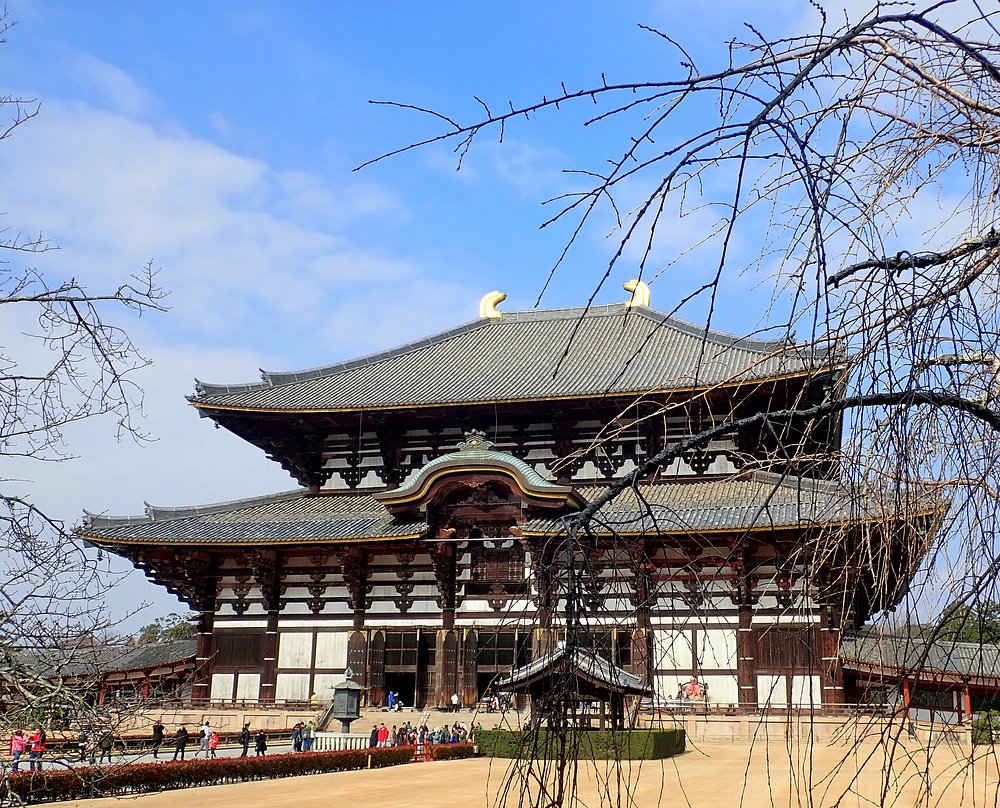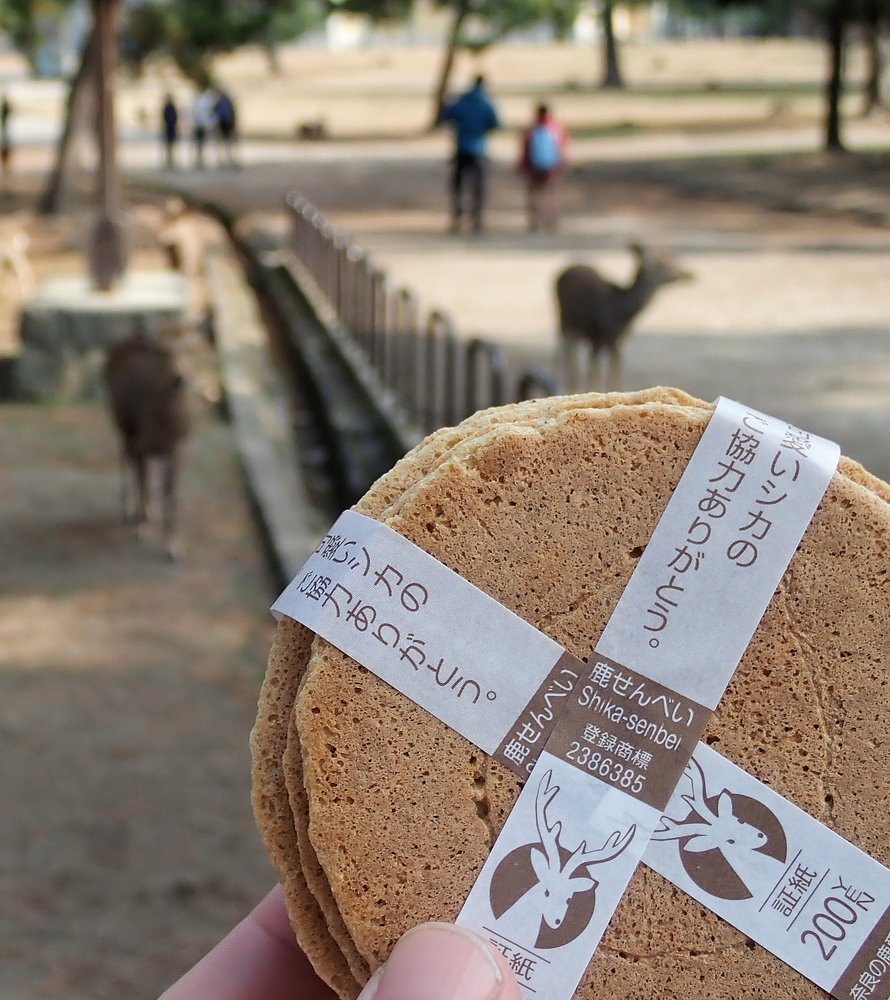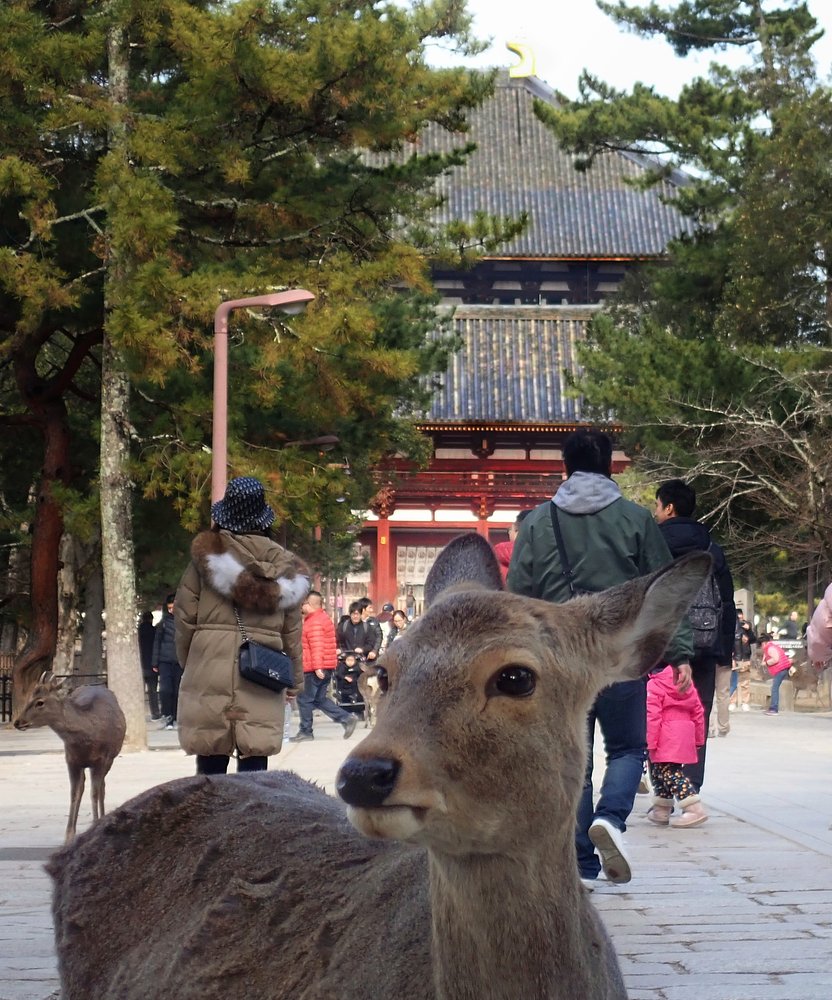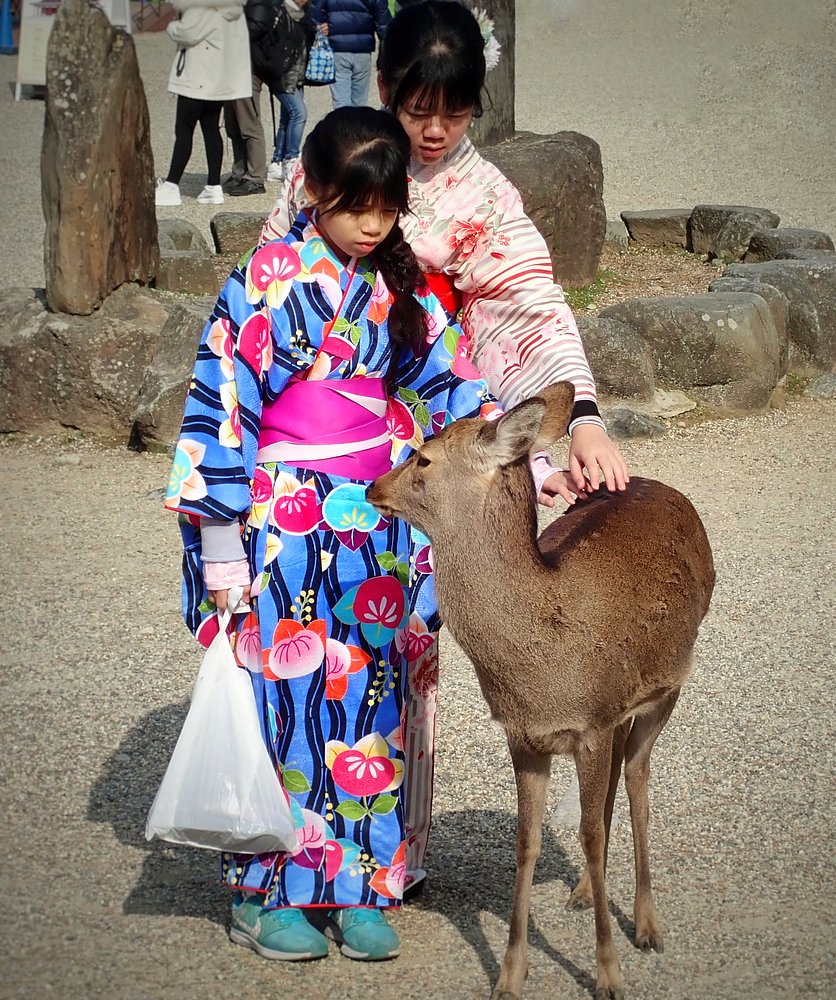Less than an hour by train from both Kyoto and Osaka, the awe-inspiring historic city of Nara a really great day trip from either city, and easily reachable using your Japan Rail pass.
Home to eight UNESCO World Heritage Sites (listed collectively as the Historic Monuments of Ancient Nara), Nara was the capital city of Japan in the 8th century (is it just me, or does it feel like every city in Japan has had a turn at being the capital...??).
We travelled from Kyoto, taking the rapid JR train which dropped us about a 20 minute walk from Nara-Koen, a huge park containing many of Nara's famous sights. The tourist information centre is right outside the station, where you can get a map and more information about the historic attractions in the city, and you can spend a really nice day walking between them.
As you head to Nara-Koen, the first major sight you will pass is Kofuku-ji. Once an enormous temple complex of over 150 buildings, the handful that remain are stunning echoes of Nara 1800 years ago. Its five-story pagoda, the symbol of Nara, is the second tallest in Japan (after Toji in Kyoto), and the two Octagonal Halls are striking. The grounds of Kofuku-ji are free to walk around, but three major buildings, the Central Golden Hall, Eastern Golden Hall (which holds a large wooden statue of the Healing Buddha) and National Treasure Museum, have small entry fees.
Walk through Nara-Koen past the Nara National Museum and you will find the Okumura Commemorative Museum. Pop in to see a display about developments in architectural earthquake technology, and you can also take a free green tea up to the open roof terrace for views over hills and temple roofs.
Next up, our favourite Historic Monument, the jaw dropping Todai-ji with its 15m Daibutsu (Great Buddha). The temple is preceded by its Nandai-mon (southern gate), where two colossal, fearsome wooden statues have stood guard since the 13th century. Once you’ve walked through the gate and past the ticket counters (entry to the Daibutsu Hall is 300 yen), you will see the main Hondo hall, which literally stopped us in our tracks. It is VAST, one of the largest wooden buildings in the world. Amazingly, this 1709 rebuild is only two thirds of the size of the original building. The mind boggles.
The magnificent Great Buddha of Todai-ji is one of the largest bronze Buddha images in the world. Its ears alone are over 8ft long! If you walk around the statue, on the back right corner is a wooden column with a hole through it at ground level. It is said that if you can squeeze through (the hole is apparently the same size as one of the Great Buddha’s nostrils), enlightenment is guaranteed. Be sure to climb the stairs up to the two subtemples of Todai-ji, Nigatsu-do, which has a lovely veranda with views over the city and Sangatsu-do, the oldest building in the whole temple complex.
Now walk through the park to Kasuga Taisha, a gorgeous grand Shinto shrine with long avenues of mossy stone lanterns. The buildings are painted in the wonderful bright vermillion colour that you will have seen if you went to Fushimi Inari, Kyoto, and even the surrounding forest is a UNESCO site. Kasugayama Primeval Forest contains 175 kinds of trees, over 1000 species of insect and 60 species of bird – it’s so important to the local ecosystem that logging and hunting has been forbidden for 1200 years! This is a really magical otherworldly place to walk around, with sub-shrines scattered amongst ancient woodland.
You can’t go to Nara without running into the city’s most famous residents, the bowing deer. Sika deer were once revered in Nara as messengers to the Shinto gods, and while they are no longer considered sacred, they are protected national treasures and so roam freely in large numbers throughout the park and surrounding streets. These cute critters are extremely confident and will happily approach you for a treat- for about 200 yen you can buy a stack of shika senbei from carts around the park- these are special crackers designed for the deer, so please don’t feed them anything else. If you bow respectfully to the deer, many of them have learned to bow back in the hopes of receiving a tasty reward! Try to approach a lone deer by itself so you don't get overwhelmed by a group (they sure want those biscuits!), and don't tease the deer- if they bow, give them the cracker. While the deer seem tame and friendly, remember that they are still wild animals and won’t appreciated being petted or cuddled for selfies. They have also been known to snatch carrier bags in search of food, so keep these out of sight while feeding the deer.
Walking route listed above will take up much of your day, but if you have some time left, here are some other things you can see and do in Nara:
- Yoshiki-en and Isuien gardens – close to Kofuku-ji, these are two beautiful traditional Japanese gardens. Yoshiki-en is small and immaculate with a moss garden and tea house, and free to enter if you show your foreign passport. Isuien garden is larger, divided in two, and features ponds, flowering trees, several teahouses and views across the hills and Nandai-mon of Todai-ji. It costs 900 Yen to enter.
- Eat Kakinoha sushi – Nara’s sushi is unique to the region- the rice and raw fish is wrapped in a persimmon leaf instead of seaweed which makes it easy to take away for a picnic in Nara Koen! Don’t eat the leaves…
- Wander Naramachi District – the old merchant neighbourhood of Nara has many beautiful traditional buildings and walking the narrow lanes is like stepping back in time. Just watch out for the rickshaws!
- Watch the yomogi mochi pounders at Nakatanidou - At the top of Sanjo Dori Street, Nakatanidou shop staff hammer glutinous rice into a sticky green paste which is turned into soft mochi cakes filled with sweet bean paste. Crowds gather to see the loud, fast paced process.
- Nara National Museum – the perfect wet weather plan, this museum is full of world class Buddhist art. Entry is 520 Yen.
- Drink sake – Nara claims to be the birthplace of sake, so you should probably try some! Harushika Sake Imanishi Seibei Store and Brewery in Naramachi, established in 1884, sells some of Nara’s most famous sake and offers tastings for about 500 Yen.
- Buy some deer merch – Nara’s souvenir shops are packed with keepsakes of their furry friends. Hats, socks, tea towels, soft toys, you name it, they probably have it with antlers on.
How to get to Nara:
From Kyoto:
Take the JR Rapid Express train from Kyoto station on the Nara line, (the local train which stops at Fushimi Inari is much slower). You will arrive into JR Nara station in about 40 minutes.
If you don’t have a JR Pass, Kintetsu-Nara station is actually nearer to the main sights, and a Kintetsu Limited Express train on the Kintetsu line from Kyoto is cheaper and faster than a train to JR Nara. It will arrive into Nara in around 34 minutes.
From Osaka
Taking the JR Yamatoji Rapid Service from Osaka station will get you into JR Nara station in 50 minutes.
If you don’t have a JR Pass, you can catch the Kintetsu Rapid Express train from Osaka Namba Station, which will get you to Kintetsu Nara Station in about 39 minutes.







Seems like a great trip, so much culture to soak up, love this itinerary!!